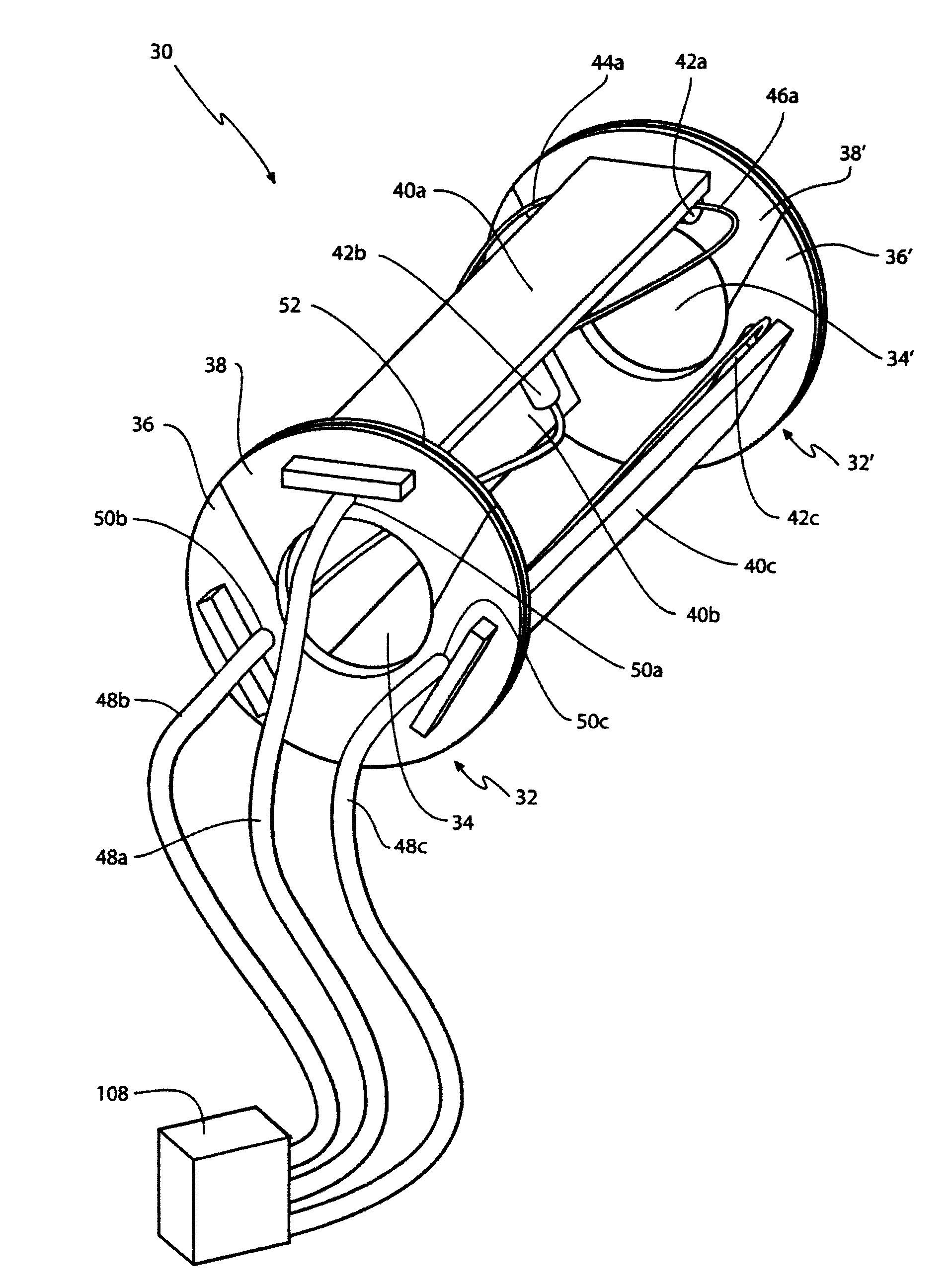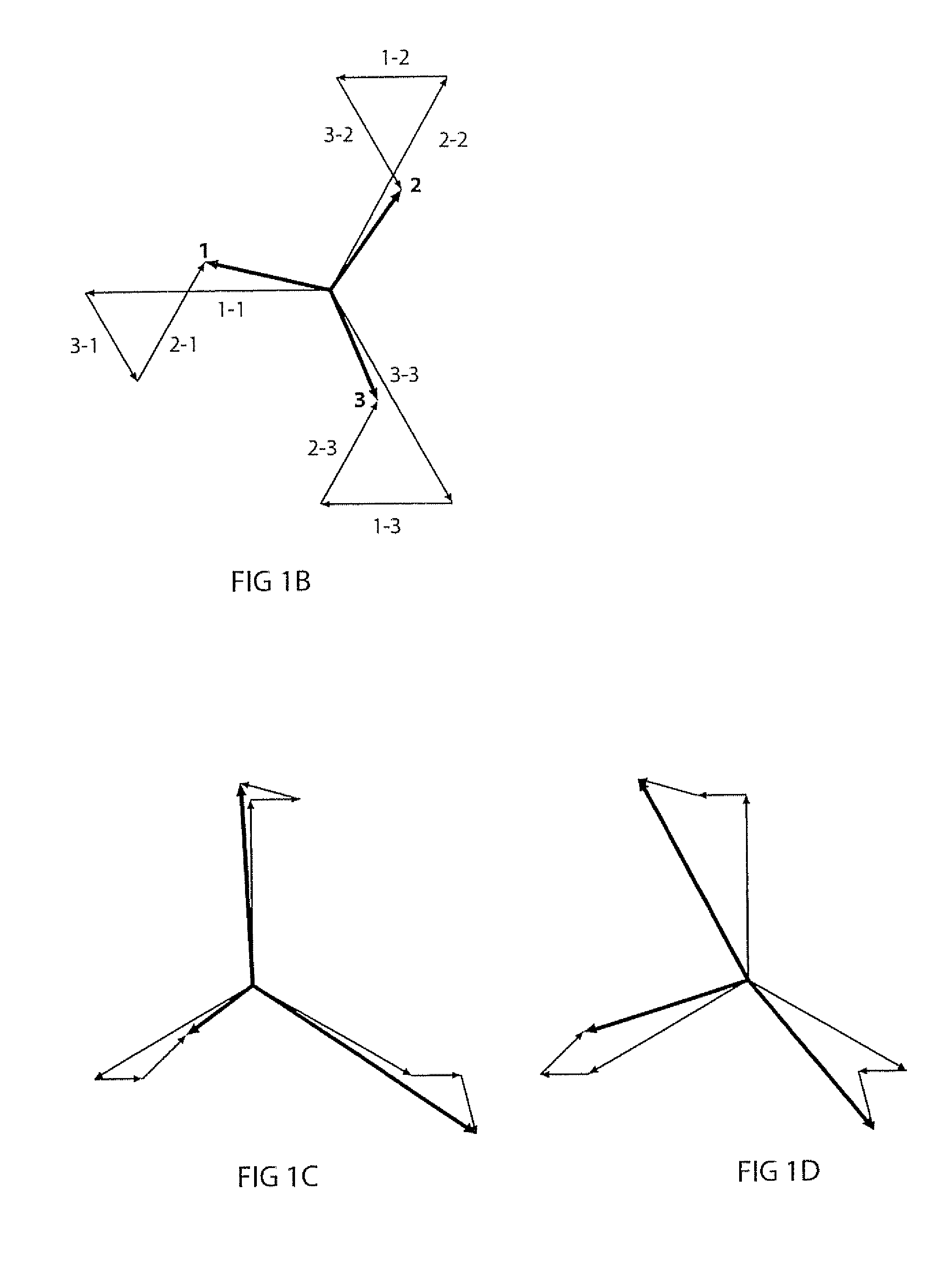3-phase Faraday optical current sensor assembly
a technology of optical current and sensor assembly, which is applied in the direction of electrical testing, measurement devices, instruments, etc., can solve the problems of not being able to separate phases, cumbersome and also a security risk, and the overhead line is more exposed to environmental influences, so as to achieve less compactness, more security and stability, and more stability
- Summary
- Abstract
- Description
- Claims
- Application Information
AI Technical Summary
Benefits of technology
Problems solved by technology
Method used
Image
Examples
numerical example
[0076]The teachings according to the present invention have been applied to calculate the current in the 12 kV 3-phase cable 14 of FIG. 1. The 12 kV 3-phase cable 14 has the following numerical properties:[0077]Thickness of the high voltage insulation: 5 mm[0078]Shield 20 thickness: 1 mm[0079]Outer insulation 22 thickness: 3.5 mm[0080]Overall diameter: 57 mm
[0081]From the above numerical properties, the relative theoretical contribution to the magnetic field from the 3-phase currents and the shield at the position of the sensor element along the direction of the sensor element may be determined. The relative theoretical contribution to the magnetic field measured by the Faraday optical current sensor 12a positioned juxtaposed the conductor 16a of phase 1 has been listed below.[0082]Phase 1: 100%[0083]Phase 2: 55%[0084]Phase 3: 55%[0085]Shield: 70%
[0086]The contribution to the magnetic field from phase 1 has been designated 100%. Each contribution is considered a vector component. Th...
PUM
 Login to View More
Login to View More Abstract
Description
Claims
Application Information
 Login to View More
Login to View More - R&D
- Intellectual Property
- Life Sciences
- Materials
- Tech Scout
- Unparalleled Data Quality
- Higher Quality Content
- 60% Fewer Hallucinations
Browse by: Latest US Patents, China's latest patents, Technical Efficacy Thesaurus, Application Domain, Technology Topic, Popular Technical Reports.
© 2025 PatSnap. All rights reserved.Legal|Privacy policy|Modern Slavery Act Transparency Statement|Sitemap|About US| Contact US: help@patsnap.com



